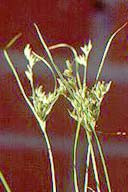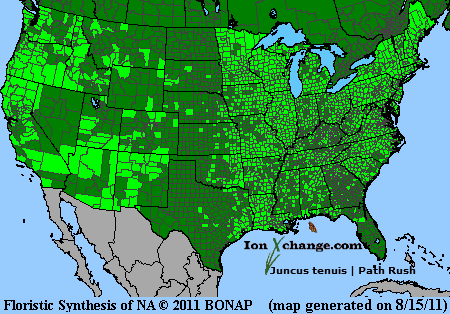 Loading... Please wait...
Loading... Please wait...- Home
- SEEDS
- SEED MIXES
- BUY PLANTS
- Info Request
-
Educational Videos
- Greenhouse Transplanting Demonstration
- Native Seed Cleaning demonstration at Ion Exchange Native Seed and Plant Nursery
- Attracting Butterflies
- Bidens - Bidens cernua Harvest Video
- Big Blue Stem Harvest
- Butterfly Milkweed Video
- Button Blazingstar - Liatris aspera Video
- Buttonbush - Cephalanthus occidentalis Video
- Canada Anemone - Anemone canadensis Harvest Video
- Cardinal Flower - Lobelia cardinalis Video
- Control Burn - Wildflower Field
- Cream Gentian - Gentiana flavida
- Culver's Root - Veronicastrum virginicum Video
- Cup Plant - Silphium perfoliatum Video
- Dormant Seeding | Planting
- Earthyman's Favorite Wildflowers Video
- Eco-Friendly Golf Course Seed Mix
- Floating Islands
- Fringed Loosestrife - Lysimachia ciliata Video
- Giant Yellow Hyssop - Agastache nepetoides Video
- Indiangrass - Sorghastrum nutans Video
- Iowa Prairie Partner Program
- Leadplant - Amorpha canescens (Potted) Video
- Meadow Blazingstar - Liatris ligulistylis
- Midland Shooting Stars - Dodecatheon meadii Video
- Native Plant Nursery Field Irrigation Experiment
- Nodding Onion - Allium cernuum Video
- Ohio spiderwort - Tradescantia ohiensis Video
- Old Man's Beard - Clematis virginiana blooms Video
- Oxeye Sunflower - Heliopsis helianthoides Video
- Prairie Spiderwort - Tradescantia bracteata
- Purple Coneflower - Echinacea purpurea Video
- Rain Garden or Water Garden Video
- Rattlesnake Master - Eryngium yuccifolium Video
- Riverbank Stabilization - Wetland Plants
- Rose Mallow - Hibiscus militaris Video
- Rosinweed - Silphium integrifolium Video
- Royal Catchfly - Silene regia
- Showy Tick Trefoil - Desmodium canadense Video
- Sneezeweed - Helenium autumnale Video
- Swamp Betony - Pedicularis lanceolata Video
- Swamp Milkweed - Asclepias incarnata Video
- Sweet Blackeyed Susan - Rudbeckia subtomentosa Video
- Tall Coreopsis - Coreopsis tripteris Video
- Urban Butterfly Garden
- Wild Bergamot - Monarda fistulosa Video
- Wild Geranium - Geranium maculatum Harvest
- Wild Goldenglow - Rudbeckia lanciniata Video
- Wild Petunia - Ruellia humilis Harvest Video
- Woodland Knotweed - Polygonum virginianum Video
- Yellow Coneflower - Ratibida pinnata Video
- Blog
- Resources
- Policies
Contact Us
Phone:
563-419-0837
or 563-535-7231
Email:
hbright@ionXchange.com
Browse Products
Add to Wish List
You Recently Viewed...
Our Newsletter
Product Description
Path Rush (Juncus Tenuis) is a native perennial rush is typically 4-12"" tall. It is often densely tufted with erect to ascending stems that are light to medium green, slender, glabrous, and unbranched. The leaves of each stem are basal or nearly so. The narrow leaf blades are about 1 mm. across and up to 10"" long; they are ascending or curve gently away from the stems. The leaf blades are medium green, glabrous, and flat to slightly involute (with margins that roll upward). The sheaths of young leaves are light green with membranous upper margins; later they become tan to brown and often somewhat shredded. At its apex, each sheath has a pair of soft membranous auricles (ear-like extensions) that are lanceolate in shape. Each fertile stem terminates in a branching inflorescence at its apex that is about ½–3"" across; this inflorescence has one or more umbel-like clusters of chaffy flowers. There are usually fewer than 10 flowers per cluster. At the base of this inflorescence, there are about 3 slender leafy bracts up to 4"" long that form a V-shape; the larger bracts extend beyond the inflorescence. Each flower has 3 scaly petals, 3 scaly petals, several stamens, and a superior ovary (later a seed capsule). The petals and sepals are nearly identical in appearance; they are about 3-5 mm. long and lanceolate in shape. Young petals and sepals are light green (sometimes with reddish tips), but they later become tan; as the flower matures, they spread slightly away from the ovary/capsule. At the base of each flower, there are tiny bractlets; they are ovate to lanceolate in shape.
| Sun Exposure | Prairie, Savanna |
| Soil Moisture | Mesic, Dry Mesic, Dry |
| Bloom Time |
Summer, Fall |
| Bloom Color | Light green, tan with red tips |
| Max Height | 1 foot |
| Wetland Code | FAC |
| Germ Code | C(60), D |
| Seeds Per Ounce | 1,000,000 |
The blooming period usually occurs during the summer; however, 1st year plants may bloom later during the fall. The flowers are wind-pollinated. The seed capsule of each flower is ovoid with a small point at its apex; it is either the same length as the persistent sepals and petals, or a little shorter than them. Each capsule eventually splits apart into 3 segments to release its tiny dust-like seeds. The seeds are less than 0.5 mm. long, ovoid or ellipsoid, and somewhat flattened; each seed tapers to a tiny point at each end. The root system is fibrous.
Typical growing conditions include full sun to light shade, wet to mesic levels of moisture, and a heavy clay-loam, clay, or gravelly soil. This rush withstands considerable trampling in paths and compacted soil. It is more tolerant of drought than many other rushes.
Edible Uses: Unknown
Medicinal Uses: An infusion of the plant has been given to babies to prevent lameness and also used as a wash on babies to strengthen them.
Other Uses: A string made from the plant has been used to bind up dough in oak leaves for cooking bread.
Herbal Uses: Unknown












